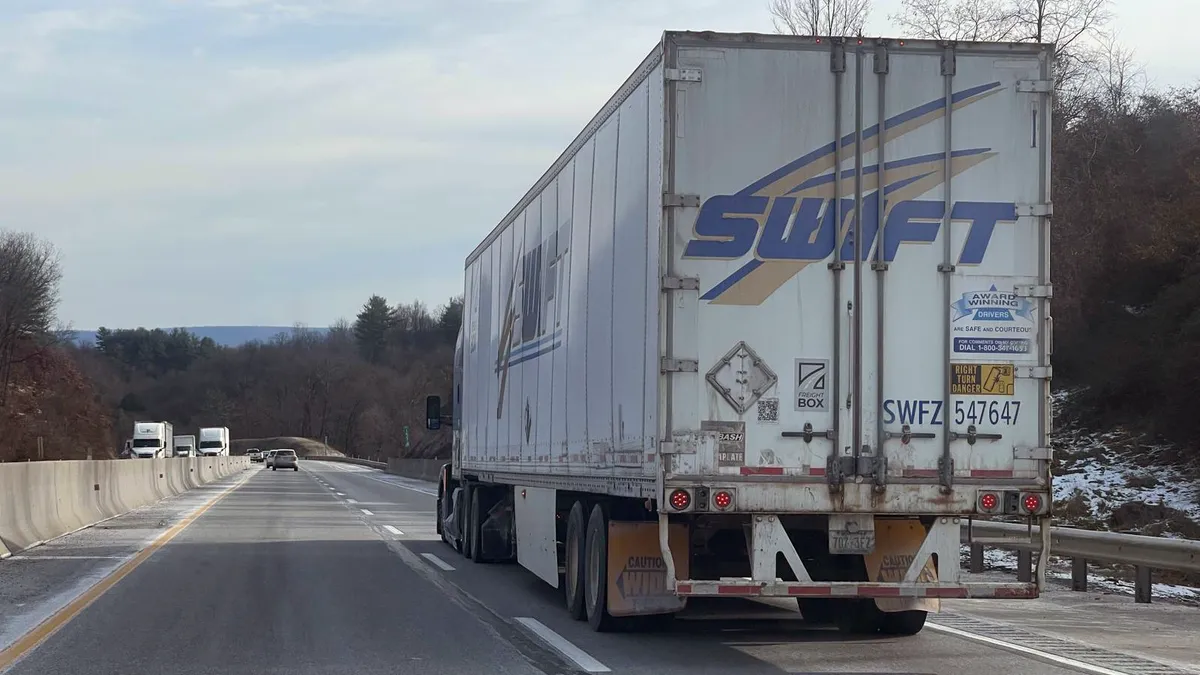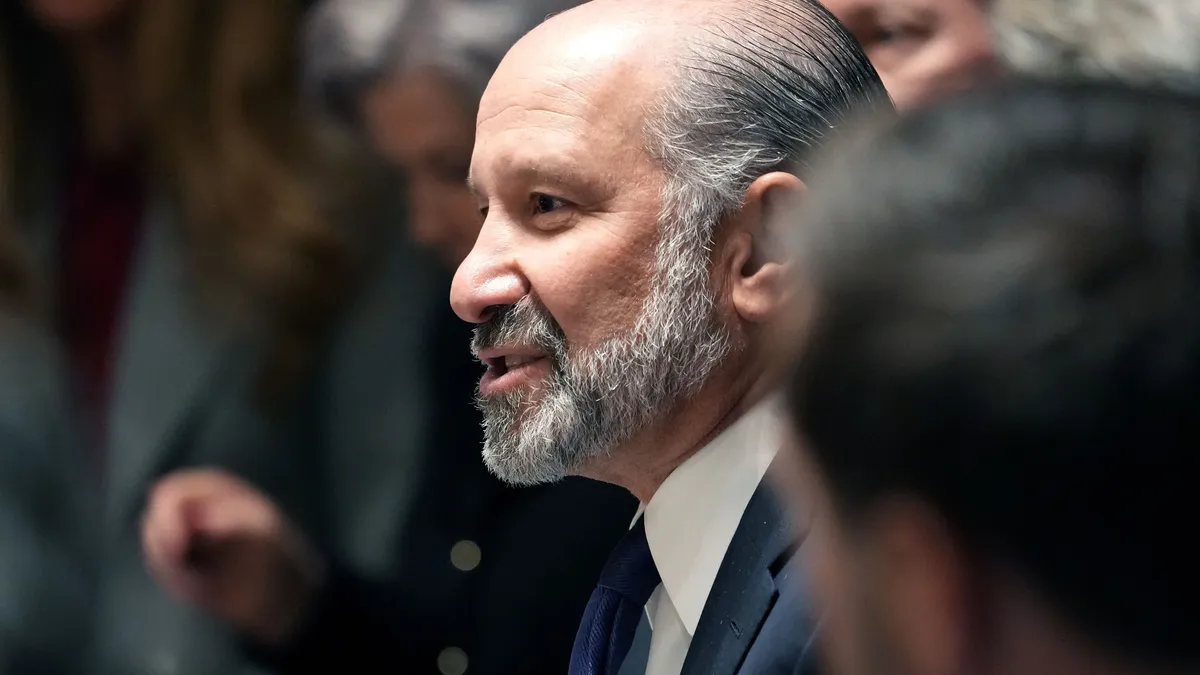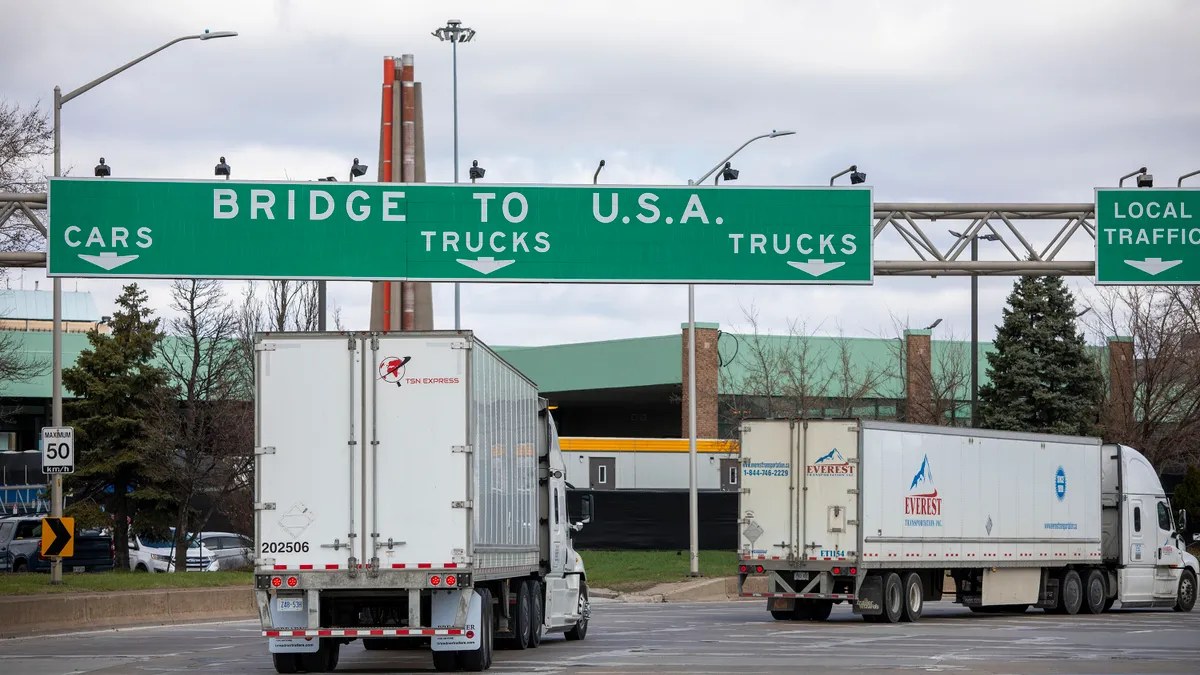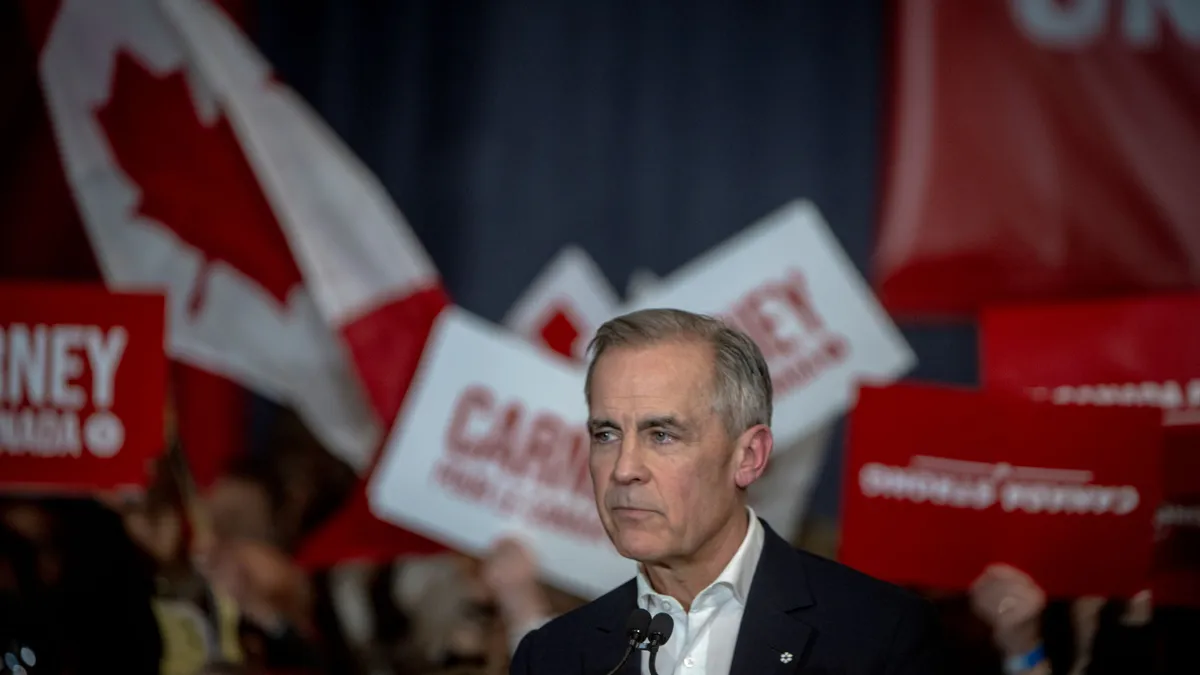After another challenging year for the trucking industry, carriers are cautiously optimistic that 2025 could deliver an upcycle driven by improvements in consumer demand, lower interest rates and capacity rightsizing.
But company leaders are also bracing for potential fallout due to new tariffs, strenuous legal and operational costs, and a potentially sluggish timeline for improvements in the market, industry stakeholders said.
“The macroeconomy looks good,” Clifford Winston, a senior fellow with the Brookings Institution, said in December. “We don’t anticipate, at this point, shocks to inflation, unemployment, cost, slowdowns, all that kind of stuff, right? But at the same time, we do see policy shocks limiting transportation of goods.”
Uncertainties with tariffs
Once President-elect Donald Trump begins his second term on Jan. 20, transportation stakeholders expect to learn more about what this year has in store.
Trump has threatened tougher tariffs for multiple countries, including 25% tariffs against Canada and Mexico. But promising such measures could be a negotiating tactic, and a deal with one or more trading partners to avoid or adjust such tariffs could emerge between now and Inauguration Day, FTR VP of Trucking Avery Vise said.
“We saw from President Trump’s first term that ... he’s a very transactional leader,” Vise said. He suggested that if a deal between the countries meets Trump's satisfaction, it could curb tariff changes. He said that seems particularly likely for U.S.-Canada trade.
Some economists have suggested Trump’s plans may be more nuanced than initial proposals. American Trucking Associations President and CEO Chris Spear agrees.
“To the degree he does it across the board, I think you’re probably going to see something more surgical, more strategic, a little more judicious than what the campaign rhetoric would suggest,” Spear said last month.
Spear met with Trump in June, and the ATA has discussed policy with the president-elect’s transition teams following the election, the trade group’s CEO said.
“I think they’re all smart enough to know that if you go all in on tariffs, there's the potential for counter tariffs and inflation as a result,” he said. “So I don't think they want to do anything that's going to have an adverse impact on the economy.”
But on Monday, Trump on the social media platform Truth Social said he wouldn't pare back his proposed tariffs.
M&A poised to target niche services
With M&A deals anticipated by behemoths such as TFI International and Knight-Swift Transportation Holdings, the year could bring further consolidation in the trucking industry.
Transportation companies may be particularly interested in enhancing their portfolios through specialized acquisitions as the market poises for potential volume upticks, said Craig Decker, managing director for investment and advisory firm Brown Gibbons Lang & Co.
The current market dynamics of selling a company could still catch owners’ attention.
A federal tax incentive that originally provided a 100% writeoff for buyers of certain capital expenditures dropped from 60% in 2024 to 40% for this year.
The measure, from the Tax Cuts and Jobs Act of 2017, is slated to further drop to 20% next year. But Decker believes the writeoff has a strong probability of being reinstated.
If a business makes a large purchase of assets or acquires an asset-based business, the depreciation tax shield can significantly reduce taxes in the first year and free up capital for growth, Decker said in an email.
Investment demand in hard assets will have a rippling effect throughout the supply chain, impacting everything from raw material to finished goods transportation, he added.
“It primes the pump,” he wrote.
Anticipating market turnaround
The ATA’s tonnage tracker has captured a sluggish freight environment that ebbed and flowed throughout 2024, but analysts have signaled hope.
The market could flip in Q2, but because the transportation industry fast-tracked some imports in Q4 2024, a bigger seasonal whiplash could occur in Q1, DAT Principal Analyst Dean Croke noted on a market update last month.
Speaking on the same panel, ACT Research VP and Senior Analyst Tim Denoyer projected a better year for 2025 than 2024 but cautioned against unreasonable and overly optimistic expectations. “I think it’s fair to say that we’ve moved into a … positive phase of the freight cycle,” he said.
In an interview with Trucking Dive, Owner-Operator Independent Drivers Association EVP Lewie Pugh stressed cautious optimism. He added that the group’s research affiliate, the OOIDA Foundation, has found that markets appear to be starting to switch after finally hitting the bottom.
The foundation reported in its December update that the number of owner-operators continued to increase, and the market could turn upward in early Q2.
But true pricing power probably won’t surface until the middle of the year, maybe in late Q3, FTR’s Vise said. The analytics firm forecasts contract rates in 2025 to grow in the low single digits year over year.
“We don’t expect anything really robust, certainly, for the year as a whole,” he said. “But by the time we get to Q4, we are expecting to see … truckload contract rates being 5% or more above year-over-year levels.”























